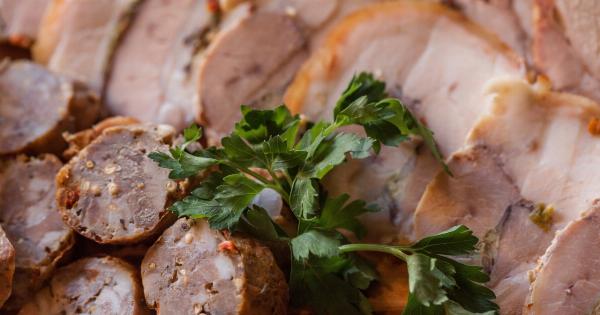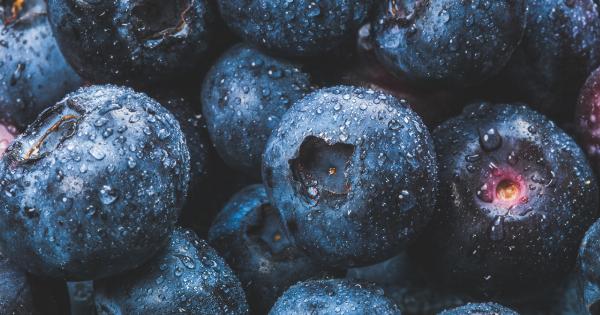Living with unexplained pain can be incredibly frustrating and debilitating. It is estimated that millions of people worldwide suffer from chronic pain without a clear cause or diagnosis.
While the exact reasons behind unexplained pain are still unknown, many experts believe that diet plays a significant role in exacerbating these symptoms.
Understanding Unexplained Pain
Unexplained pain refers to persistent or chronic pain that lacks a clear cause, making it challenging to diagnose and treat effectively.
This could include conditions such as fibromyalgia, chronic fatigue syndrome, or irritable bowel syndrome, among others. The lack of a direct cause often leads to confusion and frustration for both patients and healthcare providers.
Although the exact mechanisms behind unexplained pain are not fully understood, various factors can contribute to its development and worsening. One aspect that receives increasing attention is the impact of diet on pain levels and overall well-being.
The Role of Inflammation in Pain
Inflammation is a crucial aspect of our immune system’s response to injury or infection. In healthy individuals, inflammation subsides once the threat has been neutralized, allowing the body to heal.
However, in some cases, inflammation persists, leading to chronic inflammation, which can contribute to ongoing pain and discomfort.
In recent years, mounting evidence suggests a strong link between diet and chronic inflammation.
Certain foods can trigger an inflammatory response in the body, leading to an increase in pain levels for individuals already struggling with unexplained pain. By identifying and eliminating these inflammatory foods, patients may experience significant relief from their symptoms.
The Problematic Diet Culprits
While individual responses to particular foods can vary, there are several dietary culprits commonly associated with inflammation and exacerbated pain.
It is important to note that each person’s experience may differ, and an elimination diet, under the guidance of a healthcare professional, can help pinpoint specific triggers. However, here are some common culprits that many individuals find aggravating:.
1. Sugar
Excessive sugar consumption has been linked to various health issues, including obesity, diabetes, and heart disease. It also contributes to inflammation in the body, worsening pain symptoms.
Added sugars can be found in processed foods, sodas, desserts, and even seemingly healthy items like flavored yogurt or granola bars. Reducing sugar intake can have a noticeable impact on managing pain associated with unexplained conditions.
2. Trans fats
Trans fats are artificial fats commonly found in fried foods, processed snacks, and baked goods. These unhealthy fats not only contribute to weight gain and heart problems but also promote inflammation in the body.
By cutting out trans fats, individuals may experience a significant reduction in pain caused by chronic inflammation.
3. Refined grains
Refined grains, such as white bread, pasta, and rice, lose most of their nutrients and fiber during processing. As a result, they can spike blood sugar levels and trigger an inflammatory response in the body.
Opting for whole grains instead, such as whole wheat bread or brown rice, can provide essential nutrients while minimizing inflammation.
4. Dairy products
Dairy products like milk, cheese, and butter can be problematic for individuals with unexplained pain. Some individuals may have an underlying sensitivity or intolerance to lactose or casein, commonly found in dairy products.
This can lead to digestive issues, inflammation, and increased pain symptoms. Exploring dairy alternatives or eliminating dairy from the diet may help alleviate these symptoms.
5. Artificial additives
Artificial additives, such as food colorings, preservatives, and flavor enhancers, are often added to processed foods.
While these additives improve shelf life and enhance taste, they can trigger sensitivities and exacerbate inflammation in some individuals. Avoiding processed foods and opting for whole, natural foods can reduce exposure to these additives and promote better overall health.
6. Nightshade vegetables
For some individuals, nightshade vegetables like tomatoes, potatoes, peppers, and eggplant can worsen pain symptoms. These vegetables contain a natural compound called solanine, which can contribute to inflammation and pain in susceptible individuals.
While not everyone with unexplained pain is affected by nightshades, eliminating these vegetables from the diet can be an important step in identifying potential triggers.
7. Alcohol and caffeine
Both alcohol and caffeine can disrupt sleep patterns, contributing to increased pain sensitivity and overall discomfort. Additionally, both substances can lead to dehydration, which can further exacerbate pain symptoms.
Reducing or eliminating alcohol and caffeine intake may help manage the intensity of unexplained pain.
8. High-sodium foods
Excessive sodium intake can promote inflammation and water retention, leading to increased pain levels.
Processed and packaged foods are often high in sodium, so opting for whole, fresh foods and using herbs and spices for seasoning can significantly reduce sodium intake and minimize pain associated with inflammation.
9. Gluten
Gluten is a protein found in wheat, barley, and rye, and it can be problematic for individuals with certain conditions, such as celiac disease or gluten sensitivity. Gluten-induced inflammation can affect various body systems and worsen pain symptoms.
People experiencing unexplained pain can benefit from exploring a gluten-free diet and observing if it reduces their symptoms.
10. High-omega 6 fatty acids
While omega-6 fatty acids are an essential part of a healthy diet, an imbalance between omega-6 and omega-3 fatty acids can contribute to inflammation.
Western diets often contain excessive omega-6 fatty acids due to high consumption of processed vegetable oils, such as soybean or corn oil. Balancing the ratio of omega-6 to omega-3 fatty acids by incorporating sources of omega-3, such as fatty fish, flaxseeds, or chia seeds, can help alleviate pain symptoms associated with inflammation.
Optimizing Your Diet for Pain Relief
While making dietary changes can be overwhelming, taking a holistic approach to managing pain can greatly improve daily life. Here are some general strategies to optimize your diet for pain relief:.
1. Focus on whole, unprocessed foods
Choosing foods in their natural forms, such as fruits, vegetables, whole grains, and lean proteins, ensures a higher intake of essential nutrients and fewer artificial additives that may trigger inflammation.
2. Experiment with an elimination diet
Under the guidance of a healthcare professional or registered dietitian, try eliminating common culprits such as sugar, trans fats, dairy, gluten, and nightshade vegetables for a specific period.
Slowly reintroduce each food group while monitoring your body’s response to identify potential triggers.
3. Incorporate anti-inflammatory foods
Certain foods have natural anti-inflammatory properties that can help reduce pain symptoms associated with chronic inflammation. Examples include fatty fish rich in omega-3 fatty acids, turmeric, ginger, green leafy vegetables, and berries.
4. Stay hydrated
Proper hydration is vital for overall health and helps optimize bodily functions, including reducing pain sensitivity. Aim for at least eight glasses of water per day and limit or avoid diuretics like caffeine and alcohol.
5. Maintain a healthy weight
Excess weight puts additional stress on the body and can worsen pain symptoms. Engage in regular physical activity and focus on a balanced, nutrient-dense diet to achieve and maintain a healthy weight.
6. Keep a food diary
Tracking your daily food intake and associated symptoms can help identify patterns and potential triggers. Note any changes in pain levels or overall well-being after consuming specific foods.
7. Seek professional guidance
Working with a registered dietitian or healthcare professional specializing in pain management can provide personalized guidance, identify specific triggers, and help optimize your diet to alleviate unexplained pain.
While dietary changes alone may not completely eliminate unexplained pain, they can significantly reduce symptoms and improve overall well-being.
It is essential to work with healthcare professionals to explore a comprehensive approach to pain management while considering individual needs and underlying conditions.































